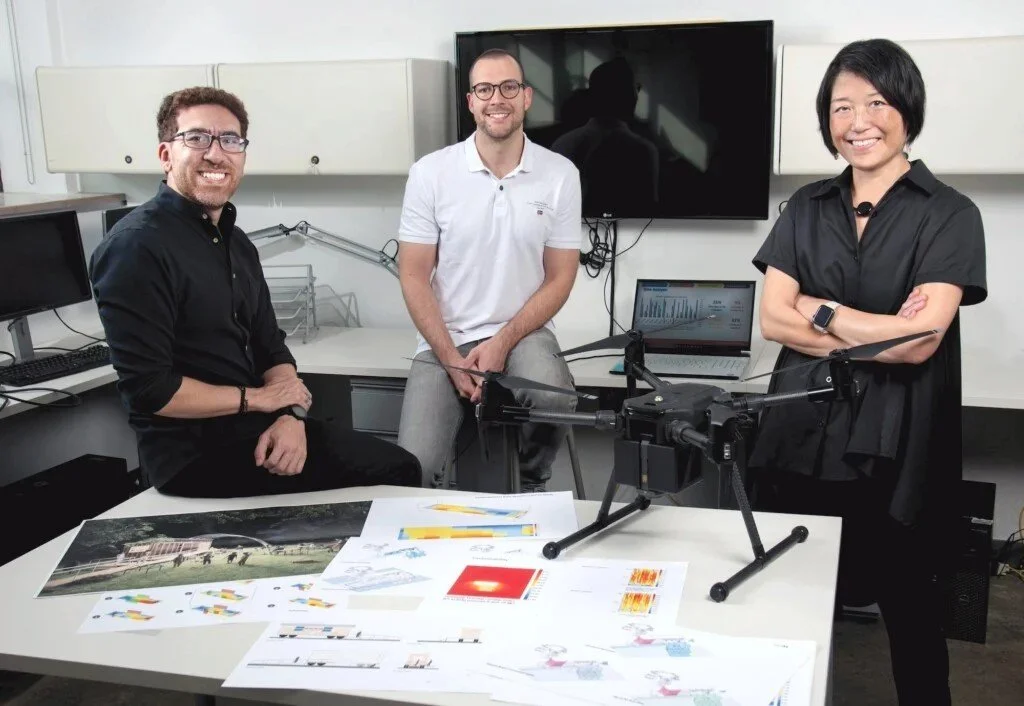Julie Kim, FAIA
By: Heather Potts Lang
Campus was quiet as I walked by the green lawns and freshly planted shrubs toward the College of Design. With most students gone for summer break, the typically bustling streets were empty and activity was isolated to a landscaping crew and a few leisurely passers-by, notably devoid of the expected mid-semester urgency. Despite the heat, I took the exterior stairs of Architecture West, running my fingers along the concrete wall as I ascended to the third floor, noting a lingering sense of ownership toward the building from my own time spent there.
When I walked into her office, Julie was sitting at her desk writing lesson plans for her fall Flourishing Community Collaborative studio [FOOTNOTE #1]. Entering her second academic year as Chair of the School of Architecture at the Georgia Institute of Technology, Julie’s eyes were excited about returning to the classroom after taking the last year to settle into her new administrative responsibilities. She greeted me with a warm hug and we sat down to discuss what lies ahead for the School of Architecture.
Born in Kansas City, Kansas in 1967 and spending the majority of her childhood years in Chattanooga, Tennessee, Julie Kim arrived on scene at Georgia Tech in 2015, from The Catholic University of American in Washington, D.C., to serve as Associate Chair of the School of Architecture. Since then, she has happily called Atlanta home.
Now Chair of the School, her position allows the students to easily know who she is, but she sees leadership as more than a general familiarity. Julie has made it a priority to walk through each studio on a weekly basis to see the students and faculty in action—and to be sure they can see her as well. She views both as necessary for building trust and respect. “People want to be heard and seen,” she said. “To be a strong leader, sometimes you may need to be quiet.”
Cognizant of the tired messaging of eating, drinking, and sleeping architecture, Julie is exploring ways to amplify studio culture while simultaneously communicating an equal emphasis on mental health and physical wellbeing. We discussed the value of peer relationships and the challenges of student camaraderie in the post-pandemic world. It’s a challenge she takes seriously and has met with an abundance of ideas, many of which are already set in motion for the upcoming semester. She echoed a principle I’ve long held true—that equity means options— suggesting a benefit to presenting students with positive choices rather than rigidly dictating their pathway to success.
“It’s a big responsibility,” Julie said of her undeniable influence for many present and past students (myself included). She recognizes the lasting impact of mentorship, reaching back to her Studio Art teacher in high school when listing those who had most significantly impacted her career. She mentioned several notable influences from over the years, including her first studio instructor and former dean at a past university, recalling how they all seemed able to bring out the best in everyone.
Reflecting on her mentors, she offered a piece of hand-me-down wisdom: “Opportunities come up everyday. You just don’t always recognize them.” She emphasized how success doesn’t look the same for everyone, and accountability to yourself was more valuable than comparisons. “Be easy on yourself if you don’t know where your life is going,” she said—a refreshing sentiment for the industry.
I asked Julie what was next for her career now that she has risen the academic ranks and what kind of legacy she hoped to leave at Georgia Tech. She excitedly said she didn’t know what was next. “Maybe I’ll write fiction,” she joked, though I secretly hope she was serious. She then shared a bit about her ten-year vision for the school and milestones she aims to accomplish along the way. “But really,” she said with equal parts pride and humility, “the students are my legacy.”



